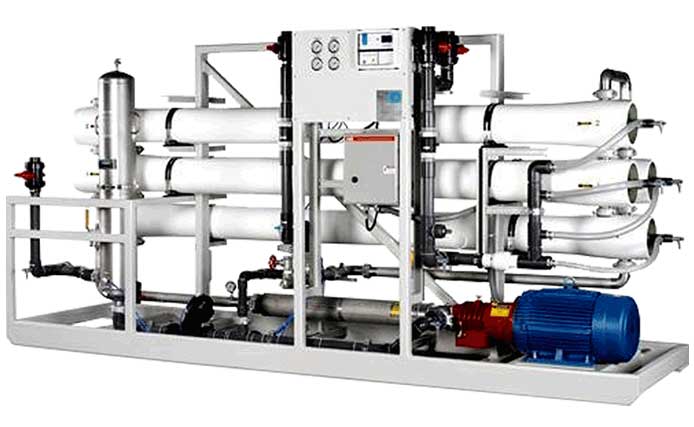Purifying Water in the Great Lakes State
Michigan, known for its abundant freshwater resources, including the iconic Great Lakes, has found itself at the center of a growing conversation around water quality and purification. In a state where water is both a cherished natural asset and a critical resource, ensuring that this water is safe for consumption is paramount. One technology that has garnered attention for its effectiveness in purifying water is reverse osmosis (RO). As residents and municipalities seek reliable solutions to address water contamination issues, reverse osmosis systems are emerging as a cornerstone in Michigan’s approach to clean water.
The Science of Reverse Osmosis
Reverse osmosis is a water purification process that uses a semipermeable membrane to remove ions, molecules, and larger particles from drinking water. The process works by applying pressure to push water through the membrane, which blocks contaminants while allowing only clean water molecules to pass through. This method is highly effective in removing a wide range of impurities, including heavy metals, salts, bacteria, and other harmful substances.
In Michigan, where water quality can vary significantly depending on the region, reverse osmosis systems are valued for their ability to deliver consistently pure water. Whether used in individual homes, businesses, or municipal water treatment facilities, RO systems provide a reliable safeguard against contaminants that might otherwise go undetected.
Addressing Michigan’s Water Challenges
While Michigan is blessed with an abundance of freshwater, the state has also faced significant water quality challenges in recent years. The Flint water crisis, which brought national attention to the dangers of lead contamination, highlighted the urgent need for improved water treatment solutions. Beyond Flint, other parts of Michigan have grappled with issues such as agricultural runoff, industrial pollution, and naturally occurring contaminants like arsenic and nitrates.
Reverse osmosis systems offer a robust solution to these challenges. By effectively filtering out both chemical and biological contaminants, RO technology can help to mitigate the risks associated with compromised water sources. For households and communities in Michigan, installing reverse osmosis systems provides an extra layer of protection, ensuring that the water they consume is free from harmful substances.
Applications of Reverse Osmosis in Michigan
The versatility of reverse osmosis systems makes them suitable for a variety of applications across Michigan. In residential settings, point-of-use RO systems are commonly installed under kitchen sinks to provide purified drinking water. These systems are particularly popular in areas where well water or municipal supplies may contain higher levels of contaminants.
In commercial and industrial contexts, larger-scale reverse osmosis systems are used to meet the demands of businesses that require high-purity water. For example, breweries, food processing plants, and pharmaceutical companies often rely on RO systems to ensure that their water meets stringent quality standards. In addition, many Michigan schools, hospitals, and public buildings have adopted reverse osmosis technology to provide safe drinking water to their occupants.
On a municipal level, some Michigan communities are incorporating reverse osmosis into their water treatment plants to address specific contamination issues. For instance, in regions affected by PFAS (per- and polyfluoroalkyl substances) contamination—a group of man-made chemicals linked to adverse health effects—reverse osmosis is recognized as one of the most effective methods for removing these persistent pollutants from water supplies.
Environmental Considerations
While reverse osmosis is highly effective, it is not without environmental considerations. The process requires a significant amount of water to operate, as some water is used to flush away contaminants during the filtration process. This “waste” water can be a concern in areas where water conservation is critical, though modern systems are increasingly designed to minimize this issue.
Moreover, the energy consumption associated with operating reverse osmosis systems, particularly large-scale units, can contribute to a higher carbon footprint. To address these concerns, ongoing research and innovation are focused on improving the efficiency of RO systems, reducing both water and energy usage. In Michigan, where environmental stewardship is a key value, the adoption of more sustainable reverse osmosis technologies is likely to grow.
The Future of Water Purification in Michigan
As Michigan continues to navigate the complexities of water quality and safety, reverse osmosis is poised to play a pivotal role in the state’s water purification strategy. With ongoing advancements in RO technology, including more energy-efficient systems and enhanced membrane durability, the future looks promising for those seeking reliable and sustainable water treatment solutions.
For residents, businesses, and municipalities across Michigan, the adoption of reverse osmosis systems represents a proactive step toward ensuring the long-term safety and quality of their water. In a state where water is both a treasured resource and a critical necessity, reverse osmosis offers a powerful tool to protect public health and preserve Michigan’s rich aquatic heritage.




